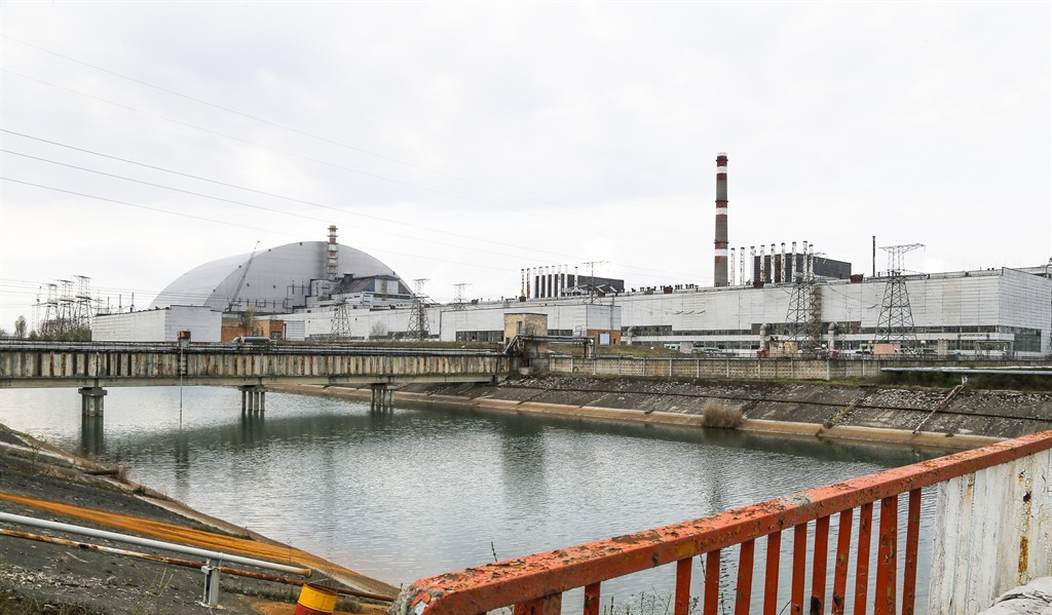A week ago I would have laughed off this claim as Ukrainian propaganda aimed at making Russian soldiers look like imbeciles.
Then I saw the drone footage of the trenches the Russian army dug in the Red Forest.
Now I wouldn’t be surprised to learn they were stuffing their pockets at the plant with plutonium because it glows all pretty-like.
I wonder how much you could get for stolen plutonium on the black market before you die in agony.
“These ‘heroes’ take the Darwin award from those doomed Russians who breathed in dust in the Red Forest,” Energoatom said in a statement on Telegram. In addition to looting computers and equipment, the Russian troops “unauthorizedly entered a repository of ionizing radiation sources” and “stole and damaged 133 sources with a total activity of about 7 million becquerels,” the nuclear company said, noting that “this is comparable to 700 kg of radioactive waste with the presence of beta and gamma radiation.” Citing the State Agency of Ukraine on Exclusion Zone Management, the company said it was believed the Russian soldiers took the “deadly” items “as souvenirs.” But if they were hoping to bring these souvenirs back home to impress their friends, they’re in for a surprise, as “carrying such a souvenir with you for two weeks will inevitably lead to radiation burns, radiation sickness and irreversible processes in the body,” according to Energoatom.
The Ukrainian nuclear energy agency believes some Russians who had high exposure may have less than a year to live. True? False? Somewhere in between?
Well, it’s certainly true that they dug those trenches in the forest, among the most radioactive places on Earth. The New York Times has a photo of one Russian camp dug deep into the soil somewhere inside the Exclusion Zone. Also true is the fact that Russian troops looted the Chernobyl facility willy nilly, a hallmark of Russian warcraft. The Daily Mail has photos of the aftermath. Mostly the Russians were looking for money, jewelry, computers — and appliances, as there are endless reports of troops hauling off Ukrainian washing machines in other occupied parts of the country — but you can imagine how a bandit might grab anything that looked valuable, whether or not they knew what it was.
A group that’s ignorant enough to set up camp inside a notorious toxic waste dump is ignorant enough to do a smash-and-grab there too, no?
Even so, this anecdote from the Times’s story is almost too ridiculous to believe:
The earthworks were not the only instance of recklessness in the treatment of a site so toxic it still holds the potential to spread radiation well beyond Ukraine’s borders.
In a particularly ill-advised action, a Russian soldier from a chemical, biological and nuclear protection unit picked up a source of cobalt-60 at one waste storage site with his bare hands, exposing himself to so much radiation in a few seconds that it went off the scales of a Geiger counter, Mr. Simyonov said. It was not clear what happened to the man, he said.
Note: Not a random Russian grunt. A Russian *from the nuclear protection unit,* who’s supposed to have been trained in this sort of thing. The plant’s chief safety engineer told the Times that (eventually) Russian nuclear experts arrived on the scene but that they held “little sway” over how the military behaved, an understatement in light of the encampments in the Red Forest.
There’s no way to know what sort of health effects Russian troops may have suffered, as the Kremlin certainly won’t be saying. But to give you a sense of the potential trouble here, CNN reporters who visited the plant after the Russians left found an empty Russian rations box on the edge of the Red Forest, in a safe area. They put a Geiger counter to it and found it was 50 times above normal levels. In hot spots around the plant (some of which are an acre or more), a soldier “would be exposed every hour to what experts consider a safe limit for an entire year.”
At one dug-in position, Russian troops had burrowed a bunker from the sandy side of a road embankment and left heaps of trash — food wrappings, discarded boots, a blackened cooking pot — suggesting they had lived in the underground space for an extended time.
Nearby, a bulldozer had scraped away the topsoil to build berms for artillery emplacements and a half-dozen foxholes.
The forest around had recently burned, suggesting a fire had swept over the area during the Russian occupation, adding radioactive smoke to the exposure of the Russian soldiers, along with dust from disturbed ground.
It’s only because of the courage and ingenuity of the Ukrainian staff at the plant who were held hostage by Russian ignoramuses that the world was spared a major disaster. At one point, according to the chief engineer, the crew was so desperate to supply the power needed to manage the spent nuclear fuel at the plant that they resorted to quietly stealing diesel out of Russian vehicles to keep the generators going.
Because no story of Russians at war is complete without gratuitous cruelty, the chief engineer says that during the occupation the entire Ukrainian security staff at the plant — 169 people — was herded into an underground bunker and kept there in cramped quarters for a month without natural light, fresh air, or much food. The Russians took them away when they left the plant, their fate still unknown. The best-case scenario is that they’re being held as POWs in Russia. The worst-case scenario, we can all guess.








Join the conversation as a VIP Member